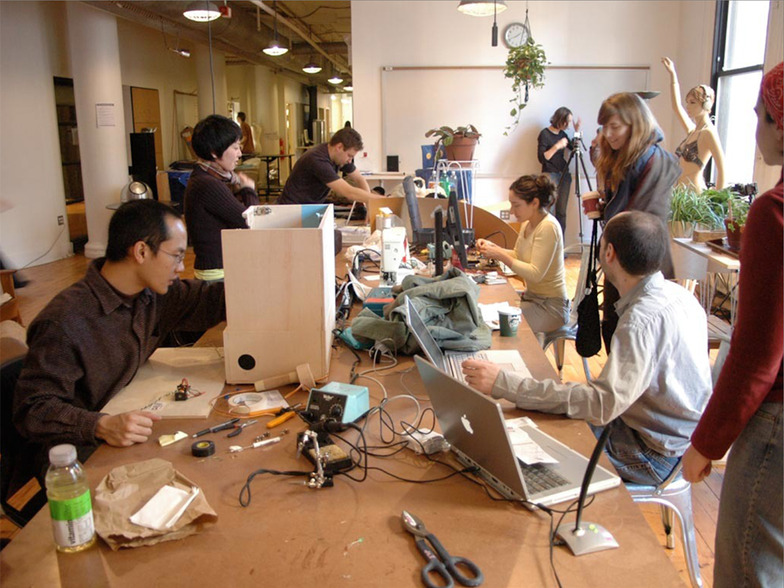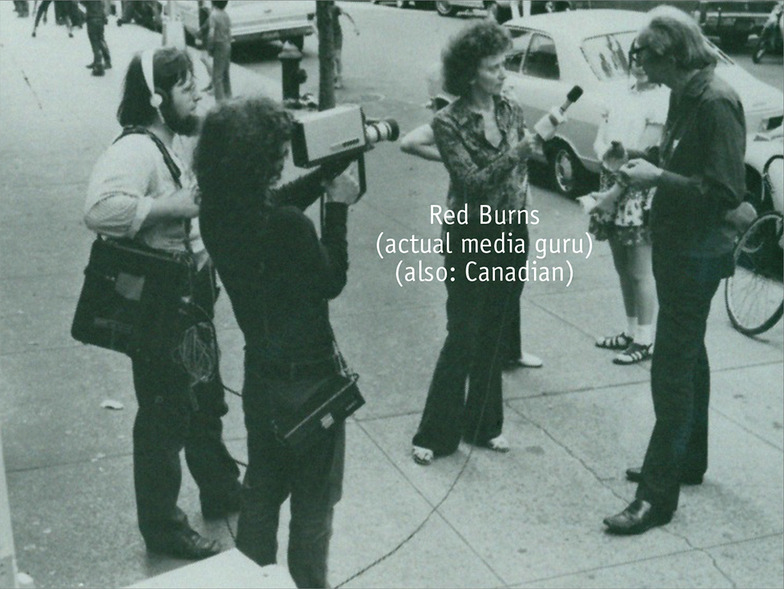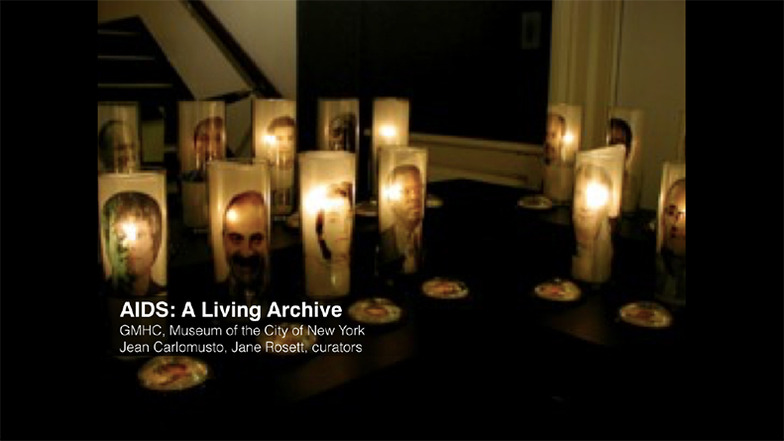At Dentsu Lab Tokyo, we call people who express themselves using technology "Creative Technologists." In this series, we interview Creative Technologists worldwide about their work and creations, exploring what new forms of expression emerge from technology.
Technology for Everyone: Tom Aigo
Our seventh interview in the Creative Technologist series features Tom Igoe. He directs the ITP (Interactive Telecommunications Program), a master's program within the NYU Tisch School of the Arts.
He pioneered physical computing, expanding the human-computer interface beyond the mouse. By extending interfaces beyond keyboards and mice to include heat and light sensors, he broadened the scope of computer applications.
He is also one of the developers of Arduino, a simplified computer platform. Arduino allows users to build circuits and load programs simply by connecting wires, without needing a soldering iron. It enables the creation of devices that light up when touched or play music when approached. It made it possible for non-geeks to tinker with computer components.
Long before IoT became a hot topic, we interviewed Tom, who has consistently taught about the relationship between objects and computers, about what physical computing is.
(This interview was conducted via online call)

Tom Aigo
Connecting Virtual and Real Worlds: Physical Computing
Kida: Here we have Tom's book Physical Computing, published in 2004. It has become a textbook for many students. Please tell us about the physical computing you pioneered.

*Physical Computing* is co-authored by Tom Igoe and Dan O'Sullivan. You can read the introduction
here.
Tom: It's the idea of connecting the physical world we experience with our bodies to the virtual world of computers. For example, creating toys that move when an infrared sensor detects proximity, or sculptures that produce different sounds depending on where you touch them.
Until now, input to computers has relied on mice and keyboards, meaning the only input from the physical world was a click from your fingertips. Physical Computing expands the points of contact between the physical world and computers by using sensors to detect light and sound. It allows non-engineers, ordinary people, to tinker with computers using the principles of electronics projects.
Physical computing originated at NYU's Tisch School of the Arts, where I teach. Professor Dan O'Sullivan, the current department chair, started teaching physical computing in 1992.
Kida: It's surprising to learn it began over 20 years ago.

At NYU today, the emphasis is on hands-on practice.
Tom: So, let me tell you about the history of physical computing.
It started because Mr. Dunn and his students wanted to create things using devices beyond just keyboards and mice. So, in class, we introduced tools that enabled physical expression through computers. We worked with electronic components and microprocessors (semiconductor chips—the brain of a computer) that could sense physical actions like touch or sound.

The black chip is the microprocessor.
Tom: The book Physical Computing that Mr. Kida has is based on a course that started in 1995. I joined ITP (Interactive Telecommunications Program = a two-year graduate program at NYU's Tisch School of the Arts exploring creative uses of technology) in 1995. Dan was the instructor at the time. In 1998, he invited me to co-teach the class with him. We wrote extensively about physical computing online together, and in 2004, we turned it into a book.
Initially, we used a variety of microprocessors, including basic ones. This was to make it accessible even to those without programming knowledge.
Kida: When you were writing, did you anticipate programming becoming as ubiquitous as it is today?
Tom: Yes. My perspective is based on the ideas of Red Burns, who started ITP in 1979. In 1967, Sony released the Portapak camera. It was the first relatively accessible video camera of its era. Seeing this, she believed video would transform the times. Media would shift from being produced by a few specialists to something anyone could create. She created learning spaces, like workshops on how to use the Portapak.

Founder Red Burns. A pioneer in using technology.
Kida: Were the students who came to your classes mainly from the art department?
Tom: Actually, they came from various departments like social sciences, political science, and literature. There were even occupational therapists who work in fields like caregiving. That's because every student was affected by technology in their lives.
And teaching technology to everyone, not just engineers—that was ITP's mission.
Kida: It's interesting that students from social sciences and other fields also took the classes. What did they create?
Tom: For example, one student built a counter to count pedestrians at an intersection for a social science study. Students from every department inevitably develop digital tools.
Kida: So, Tom, could you tell us about a piece you created using the principles of physical computing?

AIDS: A Living Archive
Tom: This is the work I'm most proud of. I worked on an exhibition about the history of this city at the New York City Museum.
Touching a candle triggers a video showing the life of someone who died from AIDS. It was created in 1997.
In the 1980s, when so much about AIDS was unknown, government research was delayed, and thousands of lives were lost. I hope that by using technology, we can convey this important history to people.
Arduino: Embodiment of Physical Computing
Tom: Development of Arduino began in 2005 to make programming environments accessible to everyone. Since then, new tools have been released by companies like SparkFun, Adafruit, and Switch Science.

Arduino. Used by various companies including Panasonic and Google
Kida: Tom, you also worked on developing Arduino, right? Using this device, you can receive inputs from the real world—like light or heat sensors—and produce outputs such as sound or movement. You can also program detailed controls using a programming language, like turning off lights if the temperature drops below 25 degrees. It truly embodies physical computing, bridging the physical world and computers.
Arduino lets you build circuits just by connecting wires—no soldering iron needed. So even non-engineers can tinker with devices.
You can purchase it online for around ¥2,000, and starter kits containing resistors and other components are also available for order.
Beyond Arduino, various technologies like Flash, Processing, openFrameworks, and Cinder have emerged for creating expressions through technology, and some have faded away. As someone teaching physical computing, what do you feel is important?
Tom: Tools are born out of necessity. Technology exists on the horizon of that need.
Demands change, so tools fade away when they're no longer needed. What developers should truly focus on is understanding what customers genuinely need.
Kida: So what need does Arduino fulfill?
Tom: By publishing code written by others, Arduino made it clear what even less knowledgeable people could do. Seeing the code encourages them to think, "I can build that too."

On the official
page's Forum, other people's code and questions are posted daily. And comments come back like, "That's a program only possible with Arduino!" or "You can solve it with code like this."

Arduino includes sample code for beginners, allowing you to quickly perform basic operations like lighting an LED.
Kida: Finally, what do you most want to create right now?
Tom: I'm interested in social phenomena. I think economic inequality has been widening steadily in the US for several years now, and I'd like to help narrow it even a little. Of course, I know it's not easy.
If I were creating something purely for enjoyment, I'd make a clock. Previously, I made a clock where the second hand moves 15 seconds per kilobyte of incoming email. It represents not the time itself, but the anxiety of needing to open the email. I'm interested in subjective time.

Email Clock
[After the Interview]
Technology was needed precisely for those who aren't engineers

Right: Author Togo Kida
Let's control computers using more than just keyboards and mice. I was surprised to see this challenge extend even to people who aren't engineers. After all, it involves working directly with exposed circuits and resistors—a specialized field. Yet, students from departments like sociology gathered in the class and developed digital tools. Tom himself originally worked in theater, handling lighting and projection design. Technology proves useful even in fields seemingly far removed from engineering.
I believe physical computing spread across disciplines precisely because ITP had a mission to make technology accessible to everyone.
In previous articles, we've seen examples of technology engaging different fields. For instance, last time's Cinder was a programming environment accessible even to designers who couldn't write code. Moving forward, we'll feature creative technologists who bridge fields, like poet-engineers. Since technology can connect with any field, communicating it clearly will become increasingly important.
This series aims to bridge the gap for non-engineers.
Full version of this article here















